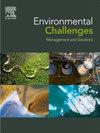Sustainability of shallot farming system in lowland Central Java Province, Indonesia: MICMAC analysis approach
Q2 Environmental Science
引用次数: 0
Abstract
Shallot farming in Central Java thrives in lowlands due to faster harvests and higher productivity. However, its sustainability faces climate change, water scarcity, pests, price fluctuations, and limited resources and technology. This study aims to determine the key factors for the sustainability of the shallot farming system in the lowlands of Central Java Province. The study was conducted in Brebes Regency with 21 respondents, Demak (38 respondents), Pati (32 respondents), and Grobogan (20 respondents). Primary data obtained using survey methods, in-depth interviews, and Focus Group Discussion (FGD) from 111 shallot farmers were used for data analysis. The data analysis method used structural analysis of the Matrix of Cross Impact Multiplication Applied to a Classification (MICMAC). The results showed that there were 16 variables from four dimensions: environment, economy, society, and technology. The analysis results show that knowledge, culture, and weather are key factors that directly determine the sustainability of the shallot farming system in the lowlands of Central Java Province; the weather shifts from quadrant I to quadrant II, indicating long-term instability. The variables of pest and disease control, water availability, and productivity show a strong indirect relationship between variables. This condition shows the importance of adjusting long-term strategies to face changes for the sustainability of shallot farming. Smart farming technology (drip irrigation, superior varieties, and integrated pest management), as well as increasing farmer knowledge and culture, are innovative steps for the sustainability of the shallot farming system in the lowlands of Central Java Province.
印度尼西亚中爪哇省低地葱种植系统的可持续性:MICMAC分析方法
由于收获速度快,生产力高,中爪哇的葱种植在低地蓬勃发展。然而,它的可持续性面临着气候变化、水资源短缺、害虫、价格波动以及有限的资源和技术。本研究旨在确定中爪哇省低地葱种植系统可持续性的关键因素。这项研究是在布雷布摄政王区进行的,有21名受访者,德马克(38名受访者),帕蒂(32名受访者)和格罗博根(20名受访者)。采用问卷调查法、深度访谈法和焦点小组讨论法(Focus Group Discussion, FGD)对111名葱农进行数据分析。数据分析方法采用了MICMAC (Cross Impact Multiplication Applied to a Classification)矩阵的结构分析。结果显示,在环境、经济、社会、技术四个维度中有16个变量。分析结果表明,知识、文化和天气是直接决定中爪哇省低地大葱种植系统可持续性的关键因素;天气从象限一转移到象限二,表明长期不稳定。病虫害防治、水分供应和生产力等变量之间存在较强的间接关系。这种情况显示了调整长期战略以面对变化的重要性,以促进大葱养殖的可持续性。智能农业技术(滴灌、优良品种和病虫害综合治理)以及农民知识和文化的提高,是中爪哇省低地葱种植系统可持续发展的创新举措。
本文章由计算机程序翻译,如有差异,请以英文原文为准。
求助全文
约1分钟内获得全文
求助全文
来源期刊

Environmental Challenges
Environmental Science-Environmental Engineering
CiteScore
8.00
自引率
0.00%
发文量
249
审稿时长
8 weeks
 求助内容:
求助内容: 应助结果提醒方式:
应助结果提醒方式:


